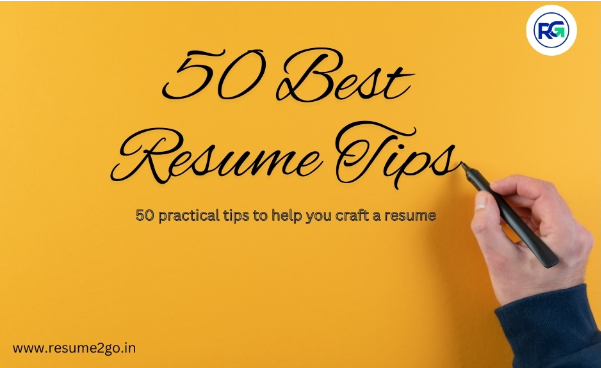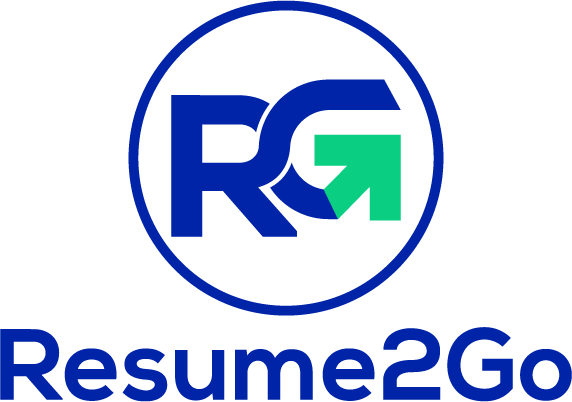Your Ultimate Resume Makeover: 50 Tips to Get Noticed

In today’s competitive job market, a powerful resume can be your golden ticket to landing your dream role. At Resume2Go, we understand the art of creating standout resumes tailored to impress recruiters and Applicant Tracking Systems (ATS). Whether you’re an experienced professional or just starting, these 50 actionable tips will help you transform your resume and make a lasting impact.
Tips for Professional Resume Formatting
- Pick a Professional Font: Stick to fonts like Calibri, Arial, Verdana, or Times New Roman, with a size of 10-12 for text and 13-14 for headings. Consistent and simple fonts help ensure readability.
- Use Pre-Made Templates: To save time, use pre-formatted templates available for Word, Google Docs, or online resume builders that simplify formatting.
- Keep It to the Right Length: Aim for a one-page resume if you have less than 10 years of experience. Senior candidates may need two pages, but avoid going longer.
- Avoid Visual Resumes for ATS: Highly visual resumes may not pass ATS scans, so unless you're in a creative field, stick to a clean, traditional format.
- Add a Touch of Color: A subtle splash of color can make your resume stand out. Try a single accent color to highlight headings or your name.
- Choose the Right Format: Select a format that aligns with your experience:
- Reverse-chronological: Best for steady career progression.
- Functional: Ideal for freelancers, career changers, or those with gaps.
- Combination: Suits experienced professionals with specialized skills.
- Include Standard Sections: Stick to commonly expected sections like a header, summary, experience, education, and skills.
- Highlight Important Information "Above the Fold": Place key details, like your contact info and main achievements, at the top of your resume.
- Create Clear Headings: Use prominent headings for each section, adding empty lines beneath for clarity.
- Use Two-Column Layouts Wisely: Two columns can help fit more information, but ensure it remains legible and organized.
- Align Text to the Left: Left-aligned text is easier to read and utilizes space efficiently.
- Bullet Points Improve Readability: Bulleted lists make key points easy to scan, particularly for work responsibilities and skills.
- Balance Text with White Space: Ensure your resume doesn’t appear cluttered by using ample white space around margins and between sections.
- Prepare for ATS Scans: Avoid excessive graphics and save your resume in PDF or DOC format for compatibility with ATS.
Crafting an Effective Resume Header
- Use a Professional Email Address: Avoid casual or unprofessional email addresses. Opt for one that includes your name or initials.
- Add Social Media Links if Relevant: Only add professional profiles, like LinkedIn, unless other social media is relevant to your field.
- Link to a Portfolio: If you have a portfolio relevant to the job, include the link to showcase your work.
Consider a Catchy Headline: A concise headline can capture attention, such as "Experienced Marketing Specialist with Strong Social Media Skills."
Writing a Strong Personal Statement
- Emphasize Positive Personality Traits: Start with qualities that match the job, like "diligent" or "motivated."
- Treat Your Profile Like an Elevator Pitch: Briefly summarize your top skills and achievements.
- Demonstrate How You Add Value: Share what you bring to the role by highlighting specific ways you could contribute to the company.
- Showcase Career Highlights: Mention a recent achievement that showcases your skills or experience.
Tips for Work Experience and Skills
- Use Action Verbs for Impact: Start each bullet with an action verb, such as "developed" or "coordinated."
- Use Numbers to Quantify Achievements: Quantitative details, like “increased sales by 25%,” add credibility to your accomplishments.
- Incorporate Relevant Keywords: Use industry-specific keywords from the job description to pass ATS filters.
- Apply the Problem-Action-Result Formula: Describe your achievements by explaining the problem, your action, and the result.
- Distribute Key Skills Throughout: Mention relevant skills in various sections, like work experience and summary, not just in a skill list.
- Limit Work History to the Last 10-15 Years: Prioritize recent, relevant experience and omit older jobs if unrelated.
- Display Promotions Appropriately: Highlight career progression by noting promotions and why you earned them.
- Focus on Results Over Duties: Rather than listing job duties, emphasize specific contributions and achievements.
- Replace Work Experience With Other Activities if Needed: If you're short on work experience, focus on volunteer work, internships, or freelance projects.
- Address Employment Gaps Openly: Briefly explain longer gaps, highlighting any skills or experience gained during that time.
- Avoid Overused Phrases and Jargon: Skip vague phrases like “responsible for” and keep language direct and straightforward.
Create a Targeted Skill List: Align skills with the job requirements, combining hard, soft, and technical skills.
Highlight Key Accomplishments: Focus on results rather than just listing responsibilities.
Tips for an Effective Education Section
- Emphasize Education if It’s Relevant: Place the education section before experience if you're a recent graduate or lack extensive work history.
- Highlight Academic Achievements: Mention honors, awards, or recognitions if relevant.
- Expand on Education When Experience Is Limited: Include relevant coursework, clubs, and extracurricular activities to demonstrate skills.
Tips for Additional Sections
- Leverage Extra Sections for Relevant Details: Use additional sections like certifications, memberships, or language skills if they align with the job.
- Make Interests Count: Include interests that align with your career or illustrate relevant skills.
- Treat Volunteer Work as Experience: Format volunteer work like paid work experience to highlight skills and accomplishments.
Showcase Certifications: List well-regarded certifications with the issuing organization and date earned.
Final Checklist Before Applying
- Remove Unnecessary Information: Keep it relevant and concise; remove any content that doesn’t align with the job listing.
- Write a Compelling Cover Letter: A well-crafted cover letter can strengthen your application and personalize your pitch.
- Use a Logical File Name: Save your resume as “[Your Name] Resume” to make it easy for hiring managers to find.
- Clean Up Your Online Presence: Ensure your social media profiles are professional and reflective of your application.
- Perform a Quality Check: Use online tools to check for grammar, spelling, and formatting errors.
- Save in PDF Format (Unless Stated Otherwise): PDFs maintain formatting, making them easier for recruiters to read.
- Proofread Carefully: Review for typos or grammar errors and have someone else review it as well.
Keep It Updated: Regularly update your resume to reflect recent accomplishments or roles.
Following these 50 resume tips — or using a service like Resume2go — can help you create a professional, polished resume that showcases your qualifications and makes a strong impression. Resume2go offers expert guidance, helping you apply these tips effectively to craft a standout resume tailored to your career goals.
